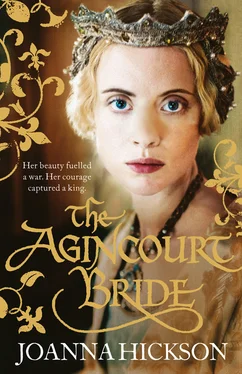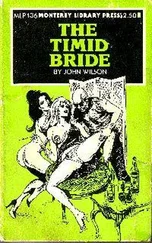JOANNA HICKSON
The Agincourt Bride


This novel is entirely a work of fiction.
The names, characters and incidents portrayed in it are the work of the author’s imagination. Any resemblance to actual persons, living or dead, events or localities is entirely coincidental.
HarperCollins Publishers Ltd.
1 London Bridge Street
London SE1 9GF
www.harpercollins.co.uk
Copyright © Joanna Hickson 2013
Joanna Hickson asserts the moral right to be identified as the author of this work
A catalogue record for this book is available from the British Library
All rights reserved under International and Pan-American Copyright Conventions. By payment of the required fees, you have been granted the non-exclusive, non-transferable right to access and read the text of this ebook on-screen. No part of this text may be reproduced, transmitted, down-loaded, decompiled, reverse engineered, or stored in or introduced into any information storage and retrieval system, in any form or by any means, whether electronic or mechanical, now known or hereinafter invented, without the express written permission of HarperCollins ebooks
HarperCollins Publishers has made every reasonable effort to ensure that any picture content and written content in this ebook has been included or removed in accordance with the contractual and technological constraints in operation at the time of publication
Source ISBN: 9780007446971
Ebook Edition © JANUARY 2013 ISBN: 9780007446988
Version: 2019-01-07
For Ian and Barley – the two who share my life, thank goodness.

“It is written in the stars that I and my heirs shall rule France and yours shall rule England.
Our nations shall never live in peace. You and Henry have done this.”
Charles, Dauphin of France
Table of Contents
Cover
Title Page
Copyright
Dedication
The House of Valois
Epigraph
Narrator’s Note
Part One
Chapter 1
Chapter 2
Chapter 3
Chapter 4
Chapter 5
Part Two
Chapter 6
Chapter 7
Chapter 8
Chapter 9
Chapter 10
Chapter 11
Chapter 12
Chapter 13
Chapter 14
Chapter 15
Chapter 16
Part Three
Chapter 17
Chapter 18
Chapter 19
Chapter 20
Chapter 21
Chapter 22
Chapter 23
Chapter 24
Chapter 25
Chapter 26
Chapter 27
Chapter 28
Chapter 29
Chapter 30
Part Four
Chapter 31
Chapter 32
Chapter 33
Chapter 34
Chapter 35
Chapter 36
Chapter 37
Chapter 38
Keep Reading
Acknowledgements
Extract from The Tudor Bride
About the Author
About the Publisher
January 1439
Respected reader,
Before we embark on this story together, I think I should explain that I am not a historian or a chronicler or indeed any kind of scholar. I did not even read Latin until my dear and present husband undertook to teach me on dark winter nights by the fire in our London house, when a more dutiful goodwife would have been doing her embroidery. Luckily my days of being dutiful are behind me. I am now fifty-two years of age and I have had quite enough of stitching and scrubbing and answering becks and calls. I have been a servant and I have been a courtier and now I am neither so I have become a scribe, for one good reason; to tell the story of a brave and beautiful princess who wanted the impossible – to be happy. Of course, here at the start of the tale, I am not going to tell you whether she succeeded but I can tell you that some momentous events, scurrilous intrigues and monstrously evil acts conspired to prevent it.
Two things encouraged me to write this story. The first was those Latin lessons, for they enabled me to read the second, which was a cache of letters found when I used a key entrusted to me for safekeeping by my beloved mistress, the aforementioned princess, to open a secret compartment in the gift she bequeathed to me on her untimely death. These were confidential letters, written at turbulent times in her life, and she was never able to send them to their intended recipients. But they filled gaps in my knowledge and shed light on her character and the reasons she chose the paths she followed.
Sadly, for the most part, she was powerless to shape the direction of her own life, however hard she tried. But there were one or two occasions when she, and I too by extraordinary circumstance, managed to steer the course of events in a direction favourable to us both, although this was never recorded in the chronicles of history.
I do not have much time for chroniclers anyway. They invariably have a hidden agenda, observing events from one side only, and even then you cannot trust them to get a story right. Some are no better than the ink-slingers who nail their pamphlets to St Paul’s Cross. One of them got my name wrong when he recorded the list of my mistress’ companions back in the days of Good King Harry. ‘Guillemot’ he called me, if you can believe it! Who but a short-sighted, misogynistic monk would saddle a woman with the same name as an ugly black auk-bird? But there it is, in indelible ink, and it will probably endure into history. I beg you, respected reader, do not fall into the trap of believing all you read in chronicles, for my name is not Guillemot. What it is you will discover in the story I am about to tell …

PART ONE
Hôtel de St Pol, Paris
The Court of the Mad King
1401–5
It was a magnificent birth.
A magnificent, gilded, cushioned-in-swansdown birth which was the talk of the town; for the life and style of Queen Isabeau were discussed and dissected in every Paris marketplace – her fabulous gowns, her glittering jewels, her grand entertainments and above all the fact that she rarely paid what she owed for any of them. The fountain gossips deplored her notorious self-indulgence and knew that, like the arrival of all her other babies, the birth of her tenth child would be a glittering, gem-studded occasion illuminated by blazing chandeliers and that they would effectively be funding it. Paris was a city of merchants and craftsmen who relied on the royals and nobles to spend their money on beautiful clothes and artefacts and when they did not pay their bills, people starved and ferment festered. Not that the queen spared a moment’s thought for any of that, probably.
For my own part, when I heard the details of her lying-in, I thought the whole process sounded horrible. It’s one thing to give birth on a gilded bed but at such a time who would want a bunch of bearded, fur-trimmed worthies peering down and making whispered comments on every gasp and groan? With the notable exception of the king, it seemed that half the court was present; the Grand Master of the Royal Household, the Chancellor of the Treasury and a posse of barons and bishops. All the queen’s ladies attended and, for some arcane reason, the Presidents of the Court of Justice, the Privy Council and the University. I do not know how the queen felt about it, but from the poor infant’s point of view it must have been like starting life on a busy stall in a crowded market place.
Читать дальше
















